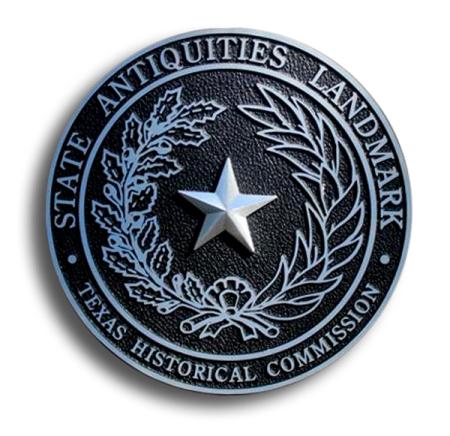The Antiquities Advisory Board makes recommendations to the Texas Historical Commission on issues related to the Antiquities Code of Texas. The Board considers and discusses proposed State Antiquities Landmark nominations and permitting issues, including resolution of defaulted permits. The Board meets in conjunction with the THC’s Quarterly Meetings.
Rules for the Antiquities Advisory Board
The following is quoted from the Rules of Practice and Procedure for the Antiquities Code of Texas, Texas Administrative Code, Title 13, Chapter 26, Rule 26.5.
As permitted by Texas Government Code, §442.005(r), the commission hereby creates the Antiquities Advisory Board (hereafter referred to as the board). The board shall make recommendations to the commission on issues related to the Antiquities Code of Texas, Texas Natural Resources Code, Title 9, Chapter 191. The board is composed of the following ten membership positions: three members of the commission appointed by the chair, a representative of the Texas Archeological Society (TAS) who is nominated in consultation between TAS and the commission, a representative of the Council of Texas Archeologists (CTA) who is nominated in consultation between CTA and the commission, a state agency archeologist who is nominated in consultation between state agencies that employ archeologists and the commission, two historians nominated by the commission from the discipline of Texas history, and two historic architects nominated by the commission, in consultation with the Texas Society of Architects, from the discipline of historic architecture. The chair of the board is appointed by the chair of the commission, from one of the three commission members that serve on the board. The vice chair will be elected each odd year by the board from within their membership. The archeologists, historians and historic architects serve two-year terms that expire on February 1, of either odd or even numbered years, as determined by the commission. All recommendations made by the board are brought to the commission by the board chair, or one of the other commission members who serve on the board. The board will accomplish its specific duties in the following manner.
- Consider and discuss all proposed landmark nominations and any non-adjudicative issues or disputes specifically related to Antiquities Code of Texas and associated permitting issues that are brought before them by the commission, members of the board, or the public.
- Function as preliminary reviewers for the commission unless otherwise directed by the commission, or refused by a complainant(s).
- Vote on final recommendations related to appropriate issues of concern and present those recommendations to the commission.
- Conflicts of interest.
- Any member of the board who has a conflict of interest related to an issue that comes before the board shall recuse himself/herself from voting and participating in the discussion on that issue. Prior to any deliberations concerning the issue with which a member of the board has a conflict of interest, the member with a conflict shall announce, for the record, that such a conflict exists and physically absent and recuse himself/herself from the decision-making process and not vote on that matter. Board minutes must indicate which member recused himself/herself and the reason(s) for the recusal.
- For the purpose of this chapter a conflict of interest would result if a vote by a member of the board is likely to result in a financial benefit or personal gain for any of the following individuals:
- the member of the board;
- any person within the second degree of consanguinity or affinity to the person, which includes a spouse, sibling, parent, grandparent, child or grandchild, whether by blood or marriage;
- a business partner of the member; or
- any organization for profit in which the member, or any person of clauses (ii) and (iii) of this subparagraph, that is serving or is about to serve as an officer, director, trustee, partner, or employee. A financial benefit includes, but is not limited to, grant money, contract, subcontract, royalty, commission, contingency, brokerage fee, gratuity, favor, or any other things of real or potential pecuniary value.
- Pursuant to Texas Government Code, §2110.008, the board must be reauthorized by the commission every four years during the commission's first regularly scheduled quarterly meeting of that year.

